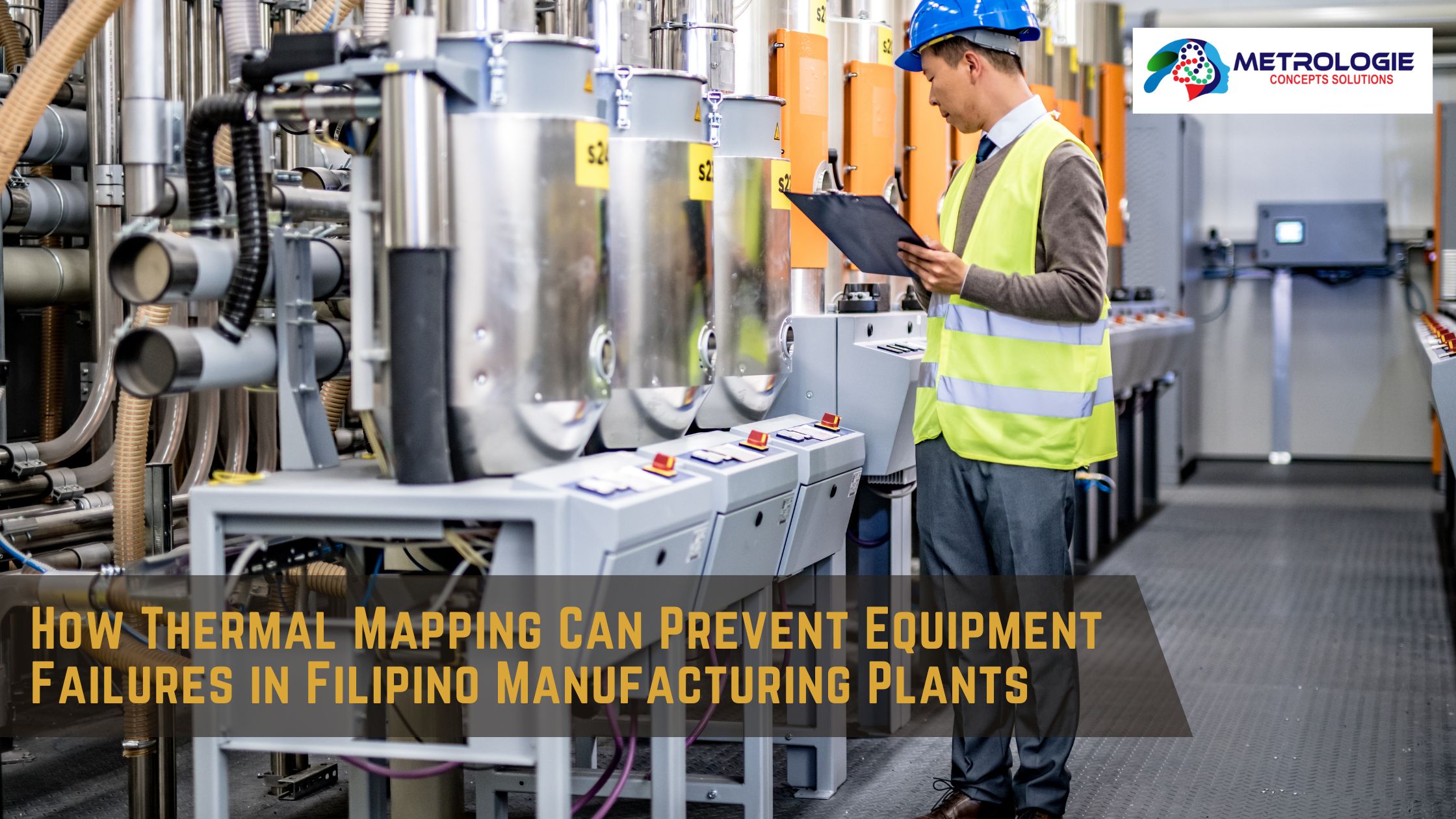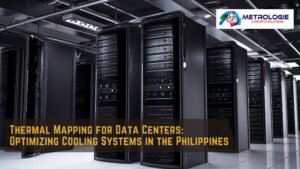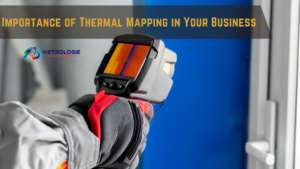Introduction
In the bustling world of Filipino manufacturing, equipment reliability is the backbone of productivity and success. From small-scale operations to large industrial plants, ensuring that machinery runs smoothly is paramount. Enter thermal mapping – a cutting-edge technique that is revolutionizing how we prevent equipment failures and maintain peak performance.
Understanding Thermal Mapping
Definition of Thermal Mapping
Thermal mapping is a process that involves measuring and visualizing temperature variations within a piece of equipment or an environment. By identifying hot spots and anomalies, thermal mapping provides critical insights into potential issues before they lead to equipment failure.
How Thermal Mapping Works
Thermal mapping uses advanced technologies like infrared cameras and thermal sensors to capture temperature data. This data is then analyzed using specialized software to create detailed thermal maps, highlighting areas of concern.
Technologies Used in Thermal Mapping
The primary tools in thermal mapping include infrared cameras, which detect heat emitted by objects, and thermal sensors that provide precise temperature readings. Data analysis software is crucial for interpreting the collected data and generating actionable insights.
The Importance of Equipment Reliability
Impact of Equipment Failure
When equipment fails, the consequences can be severe. Production halts, deadlines are missed, and revenue losses mount. For Filipino manufacturers, maintaining equipment reliability is essential to staying competitive in a global market.
Cost Implications
Equipment failures can be costly. Repairs, replacements, and lost productivity add up quickly. By preventing these failures, thermal mapping helps manufacturers save money and allocate resources more efficiently.
Safety Concerns
Faulty equipment isn’t just a financial risk – it’s a safety hazard. Malfunctions can lead to accidents and injuries, putting workers at risk. Thermal mapping enhances safety by identifying and addressing potential issues early.
Common Causes of Equipment Failure
Mechanical Issues
Wear and tear, lack of lubrication, and component failures are common mechanical issues that can lead to equipment breakdowns.
Electrical Faults
Short circuits, overloaded circuits, and electrical insulation failures are typical electrical problems that can cause equipment to fail.
Environmental Factors
Temperature fluctuations, humidity, and dust can all impact equipment performance. Thermal mapping helps monitor these environmental factors and mitigate their effects.
Thermal Mapping in Manufacturing
Application in Manufacturing Plants
Thermal mapping is applied across various manufacturing sectors, from food processing to electronics. It helps ensure that equipment operates within safe temperature ranges and identifies areas that require maintenance.
Key Benefits of Thermal Mapping
Thermal mapping offers numerous benefits, including early detection of potential failures, improved maintenance planning, and enhanced equipment reliability. By addressing issues before they escalate, manufacturers can avoid costly downtime.
Case Studies of Thermal Mapping Success
Several Filipino manufacturing plants have successfully implemented thermal mapping. These case studies showcase how thermal mapping has led to significant reductions in equipment failures and maintenance costs.
Steps to Implement Thermal Mapping
Initial Assessment
Before implementing thermal mapping, conduct a thorough assessment of your equipment and identify areas where temperature monitoring is critical.
Choosing the Right Technology
Select the appropriate thermal mapping technology based on your specific needs. Consider factors such as the type of equipment, operating environment, and budget.
Installation and Setup
Proper installation and setup are crucial for accurate thermal mapping. Ensure that sensors and cameras are correctly positioned to capture relevant data.
Regular Monitoring and Maintenance
Once implemented, continuous monitoring and regular maintenance are essential to keep the system running smoothly and provide reliable data.
Technologies Used in Thermal Mapping
Infrared Cameras
Infrared cameras capture thermal images, providing a visual representation of temperature variations. They are essential tools for identifying hot spots and potential issues.
Thermal Sensors
Thermal sensors measure specific temperature points, offering precise data for analysis. They are often used in conjunction with infrared cameras for comprehensive thermal mapping.
Data Analysis Software
Specialized software analyzes the collected data, generating detailed thermal maps and reports. This software is crucial for interpreting the data and making informed maintenance decisions.
Benefits of Thermal Mapping for Filipino Manufacturers
Increased Equipment Lifespan
By identifying and addressing issues early, thermal mapping helps extend the lifespan of equipment, reducing the need for frequent replacements.
Reduced Downtime
Early detection of potential failures means that maintenance can be planned during scheduled downtime, minimizing disruptions to production.
Enhanced Safety
Thermal mapping enhances workplace safety by identifying and addressing potential hazards before they become serious issues.
Cost Savings
Preventing equipment failures and extending equipment lifespan result in significant cost savings for manufacturers. Thermal mapping helps allocate resources more efficiently.
Challenges in Implementing Thermal Mapping
Cost of Implementation
The initial cost of thermal mapping technology can be a barrier for some manufacturers. However, the long-term benefits often outweigh the initial investment.
Technical Expertise Required
Implementing and maintaining a thermal mapping system requires technical expertise. Manufacturers may need to invest in training or hire specialists.
Data Management Issues
Managing and analyzing large volumes of temperature data can be challenging. Proper data management systems are essential for effective thermal mapping.
Overcoming Challenges
Government Support and Incentives
Government support and incentives can help offset the cost of implementing thermal mapping. Filipino manufacturers should explore available grants and subsidies.
Training and Development Programs
Investing in training and development programs can help build the necessary technical expertise within the organization.
Collaborating with Experts
Partnering with experts in thermal mapping can provide valuable insights and support, ensuring successful implementation and maintenance.
Lessons Learned
Key lessons from this case study include the importance of thorough initial assessments, proper training, and continuous monitoring to achieve the best results.
The Future of Thermal Mapping in the Philippines
Emerging Trends and Technologies
The future of thermal mapping looks promising, with emerging trends like AI integration and real-time monitoring enhancing its capabilities.
Potential for Growth
As more Filipino manufacturers recognize the benefits, the adoption of thermal mapping is expected to grow, driving improvements in equipment reliability and productivity.
Industry Outlook
The industry outlook for thermal mapping in the Philippines is positive, with increasing awareness and technological advancements paving the way for widespread adoption.
Conclusion
Thermal mapping is a game-changer for Filipino manufacturing plants, offering a proactive approach to maintenance and equipment reliability. By preventing failures before they occur, manufacturers can save costs, enhance safety, and boost productivity. Embracing thermal mapping is a step towards a more efficient and competitive manufacturing industry in the Philippines.
FAQs
What is thermal mapping?
Thermal mapping involves measuring and visualizing temperature variations within equipment or an environment to identify potential issues and prevent failures.
How does thermal mapping prevent equipment failures?
By identifying hot spots and anomalies, thermal mapping allows for early detection and proactive maintenance, preventing equipment failures before they occur.
What are the costs associated with thermal mapping?
The costs of thermal mapping can vary based on the technology used and the scale of implementation. However, the long-term benefits often outweigh the initial investment.
Are there any government incentives for thermal mapping in the Philippines?
Yes, there are government support programs and incentives available to help offset the cost of implementing thermal mapping. Manufacturers should explore these options.
How can small manufacturers implement thermal mapping?
Small manufacturers can start with a basic thermal mapping setup and gradually scale up. Partnering with experts and accessing training programs can also facilitate successful implementation.




